
Photography || Portfolio Site || Blog || About || Contact || Home ||
Flies, Under the Radar: 10 Flies You Need in Your Box
Published in the May/June 2008 issue of the Montana Sporting Journal
By Joshua Bergan
The hare’s ear, pheasant tail, elk hair caddis, prince nymph, woolly bugger, and Adams are all effective flies, and should be in everyone’s fly box. But they’re not the only patterns that work. Clear a corner of your box for these new classics.
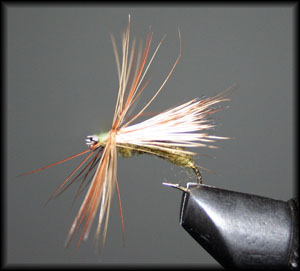
-Polish Caddis-
Hook: Standard dry fly in sizes #14 through #18
Thread: Olive 6/0
Abdomen: Super fine olive dry fly dubbing
Rib: Copper wire
Wing: Bleached elk hair
Hackle: Furnace hackle
Similar to the elk hair caddis, it's basically easier to tie. When fished in tandem with an elk hair caddis, the Polish outperforms its sister, possibly because it forms a more accurate silhouette.
Note: This was taught to me as the Polish caddis, but I’ve seen another pattern called the Polish caddis that represents an emerging pupae.
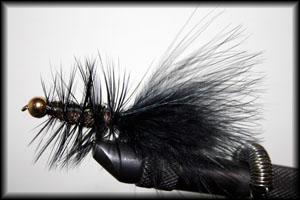
-Peacock Bugger-
Hook: 2X long in sizes #2 through #10
Thread: Black 3/0
Weight: Lead wire
Tail: Black marabou
Abdomen: Five or six strands of peacock herl twisted together, plus a few strands of krystal flash that stretch back through the tail
Hackle: Black saddle hackle (the stiffer the better)
Head: Gold bead or conehead (optional)
A slight variation on maybe the most classic pattern. The sheen of the peacock herl possibly simulates the sparkle of a baitfish’s scales. As with all buggers, the stiffer the hackle, the more water gets displaces when it’s stripped, and greater disturbance is created.

-Cat Puke-
Hook: Standard dry fly in sizes #4 through #8
Thread: 8/0 (It gets covered, so color doesn’t matter)
Abdomen: Rainey’s Tube Bodiz, plus a stripe of peacock herl
Thorax: Any natural-colored dubbing
Legs: Orange floss
Wing: Deer or elk hair – cut the strands as long as you can
This has been the pattern over the last couple of years for the salmonfly hatch. Most believe its effectiveness lies in the fact that the body sits just below the surface. Also, the color of the body is spot on. Tie the legs on with thread, and cover it with the peacock herl. Don’t be afraid to fish it as a nymph tight along a bank, during a hatch.
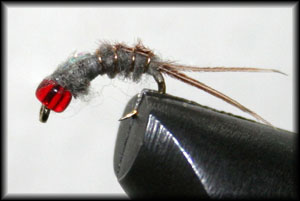
-Greg’s Emerger-
Hook: Scud hook, size #18 through #22
Thread: Gray 8/0
Head: Small pearl bead
Tail: Pheasant tail
Back strap: Pheasant tail
Rib: Copper wire
Wing case: Krystal flash
Abdomen: Muskrat fur
Greg Cunningham created this pattern to simulate emerging baetis on Colorado’s South Platte River, but that doesn’t mean it won’t work in Montana. I substitute hare’s ear or super fine dry fly dubbing for the muskrat, and any color bead may be used. Bottom line – if you see baetis, tie this one on.
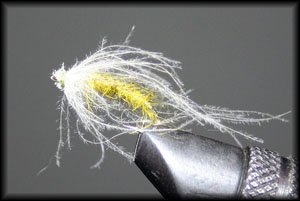
-CDC Soft Hackle-
Hook: Standard dry fly hook size #12 through #18
Thread: Olive 6/0
Body: Super-fine dry fly or hare’s ear dubbing
Rib: Copper wire
Hackle: Tan CDC fibers
A neat and tidy fly does not necessarily make an effective fly, and this pattern illustrates that. As with all CDC patterns, the hackle traps air bubbles, which appear to trout as the gas bubble that lifts emerging insects to the surface.
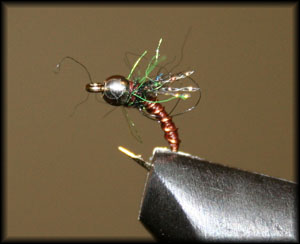
-Brady Brown-
Hook: Scud/pupa hook size #16 through #22
Thread: Brown 8/0
Abdomen: Thread
Thorax: Peacock superbright dubbing
Rib: Small copper wire
Wingcase: Three small strands of midge flash
Head: Metal bead
Livingston’s Brady Hughes engineered this universally effective pattern. While not revolutionary, it’s apparently the right combination because it hammers fish on Montana’s best.
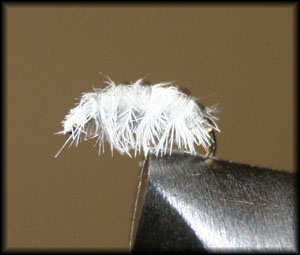
-Liquid Lace Sowbug-
Hook: Scud hook, size #14 through #20
Thread: Gray 8/0
Tail: Light-colored hackle fibers
Body: Ostrich herl with Liquid Lace wrapped around
Back strap: Krystal flash
Al Campbell came up with this beauty, which is best fished in a spring creek or any water with substantial vegetation, including lakes. Trout take it as either a scud or sowbug. It’s easiest to tie the back strap down to force the herl down, then tie the Liquid Lace around.
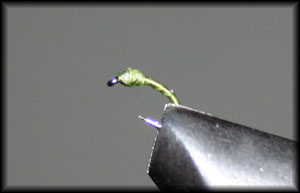
-T.C.T.K.-
Hook: Scud hook size #16 through #24
Thread: 8/0 Olive, red, gray, brown, tan
For the angler on a budget. John Scott developed the t.c.t.k. (twelve cent trout killer) while fishing in Idaho, but its effectiveness knows no boundaries. If you invest a bit more capital, you can add a beadhead and a rib. Trout take it as a midge larvae or immature caddis larvae.
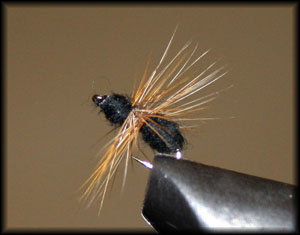
-Ant Fly Pattern-
Hook: Standard dry fly hook, size #14 through #18
Thread: Black 8/0
Body: Black super fine dry fly dubbing
Hackle: Short, black or brown
Rob O’Reilly patterned this simple, yet important fly. During terrestrial season when your instinct tells you to tie on a hopper, try this one.
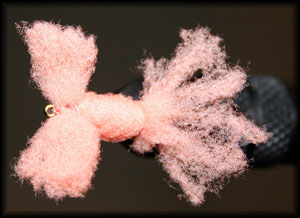 (shown from above)
(shown from above)
-Strike Indicator Pattern-
Hook: Standard dry fly hook, size #08 through #12
Thread: 8/0, color to match body
Body: McFly Foam
The Madison River Fishing Company in Ennis sells a version of this, and while it’s probably meant more as a gag, it’s a legit pattern. This particular design is Charles R. Meck’s.